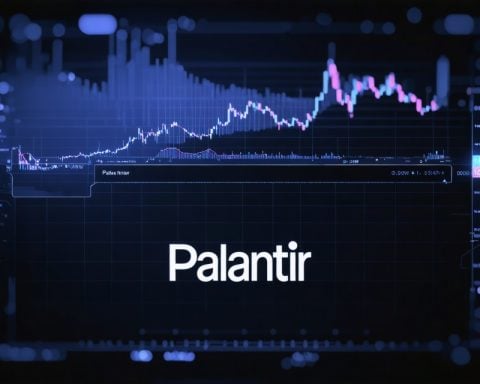In the ever-evolving field of space exploration, the Apophis asteroid, named after the Egyptian god of chaos, has once again captured global attention. Initially discovered in 2004, this near-Earth object is approximately 370 metres in diameter—akin to the size of three and a half football pitches. While previously considered a potential threat due to its proximity to Earth during future flybys, a fresh perspective on Apophis’ size and potential hazards has emerged thanks to cutting-edge technology.
Recent advancements in radar imaging and spectroscopy have allowed scientists to gain an unprecedented understanding of Apophis’ composition and structural stability. New findings reveal that the asteroid’s mass and velocity attributes might make it more susceptible to external forces like solar radiation, affecting its trajectory in unexpected ways. Additionally, space agencies like NASA and ESA are investing in next-generation observation satellites, equipped with AI-driven analytics, to monitor these changes in real-time.
These technological breakthroughs are not just about mitigating potential collision risks; they are paving the way for future asteroid mining endeavours. Understanding the size and composition of asteroids like Apophis could offer insights into the availability of rare minerals, potentially revolutionising the space economy.
As we look to the future, the continued study of Apophis will be instrumental in enhancing planetary defence strategies and promoting responsible exploration beyond Earth. This cosmic entity, once a symbol of impending doom, now represents an opportunity for advancement in space science and technology.
Unlocking the Secrets of the Apophis Asteroid: New Discoveries and Future Prospects
In the realm of space exploration, the Apophis asteroid—named after the Egyptian god of chaos—has been a subject of intrigue since its discovery in 2004. However, recent advancements in technology have shed new light on this cosmic body, providing insights that go beyond what we previously understood.
Advanced Radar Imaging and Spectroscopy
Cutting-edge radar imaging and spectroscopy have dramatically enhanced our grasp of Apophis’ physical characteristics. These technological leaps have revealed that the asteroid’s mass and velocity might be more influenced by external forces, such as solar radiation, than previously thought. This potentially alters its trajectory, underscoring the need for continuous monitoring.
AI-Driven Analytics in Space Observation
Space agencies, including NASA and ESA, are at the forefront of utilising next-generation observation satellites. These satellites are equipped with AI-driven analytics that provide a real-time analysis of Apophis’ movements. This innovation is crucial for deepening our understanding of the asteroid’s behaviour and ensuring accurate predictions of its path.
Potential for Asteroid Mining
The implications of these developments extend beyond planetary defence. The knowledge gained from studying Apophis opens doors for future asteroid mining endeavours. By understanding the size and composition of asteroids, scientists can assess the availability of rare minerals, which could transform the space economy.
Enhancing Planetary Defence Strategies
Apophis, once seen as a possible threat, now symbolises progress in our approach to planetary defence. The ongoing study of this asteroid contributes significantly to the development of strategies that protect Earth from cosmic impacts, showcasing the proactive role technology plays in such efforts.
Sustainability and Responsible Exploration
As we look towards sustainable and responsible exploration of outer space, Apophis serves as a valuable case study. The methodologies and insights gleaned from this asteroid help in shaping a future where space exploration is conducted with respect to potential environmental and ethical considerations.
For more information on the initiatives and technologies used in space exploration, visit the NASA homepage and the ESA homepage.
As technology continues to evolve, our understanding of celestial bodies like Apophis will deepen, heralding an era of unprecedented opportunity and discovery in space science.


















